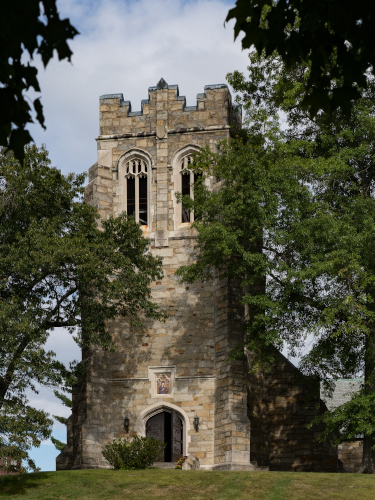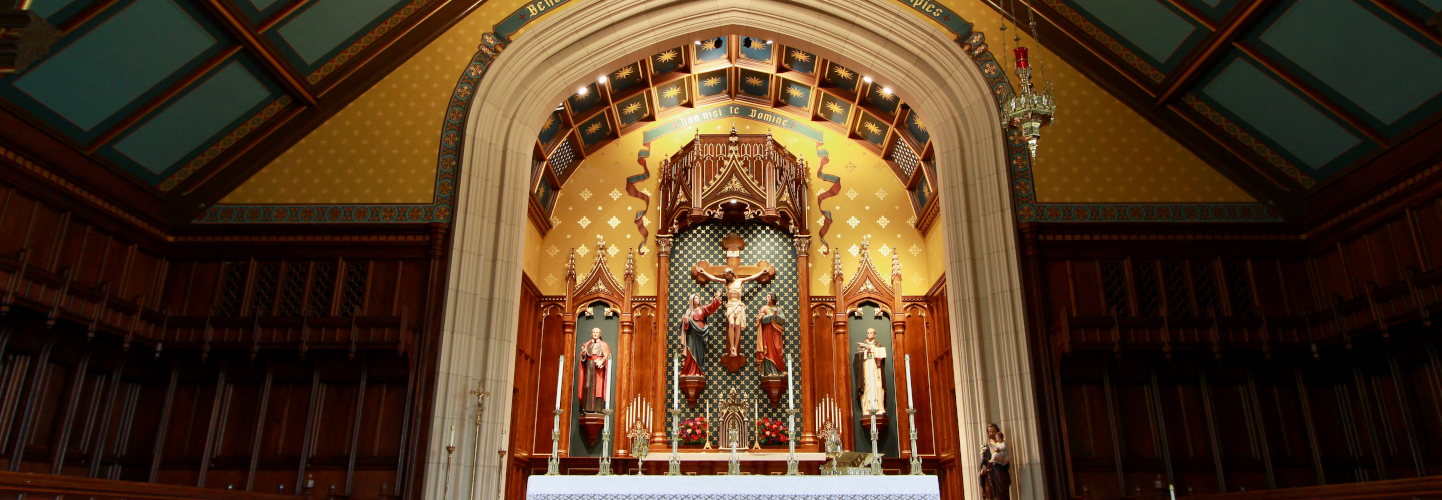 Constructed in 1909 on what was then the campus of the Northfield Seminary for Young Ladies, Thomas Aquinas College’s New England chapel was designed by the Boston firm of Shepley, Rutan, and Coolidge, architects of the original quadrangle at Stanford University, the Ames Building in Boston, and the Chicago Public Library. Built from Rockport granite, it is of the Gothic revival style in a variant known, fittingly, as Collegiate Gothic. Like its California counterpart, it is cruciform in shape, representing the Cross of Christ.
Constructed in 1909 on what was then the campus of the Northfield Seminary for Young Ladies, Thomas Aquinas College’s New England chapel was designed by the Boston firm of Shepley, Rutan, and Coolidge, architects of the original quadrangle at Stanford University, the Ames Building in Boston, and the Chicago Public Library. Built from Rockport granite, it is of the Gothic revival style in a variant known, fittingly, as Collegiate Gothic. Like its California counterpart, it is cruciform in shape, representing the Cross of Christ.
A gift of Margaret Olivia Sage, the Chapel was originally named for her late husband, Russell Sage, an American financier, railroad executive, and member of Congress. In 2019, just weeks before launching the campus’ inaugural year of classes, the College announced the building’s new name: Our Mother of Perpetual Help, in honor of Our Lady, who, through her intercession, has been a source of perpetual help to the College, particularly in the establishment of Thomas Aquinas College, New England.
While preserving the Chapel’s elegance and heritage, the College initiated a number of renovations to transform it for Catholic worship. Workers have installed a tabernacle, kneelers, a central aisle for liturgical processions, confessionals, a permanent altar and altar rail, Stations of the Cross, and a high altar and reredos. The building also now features an icon of its patroness, modeled after a centuries-old image associated with countless miracles.









